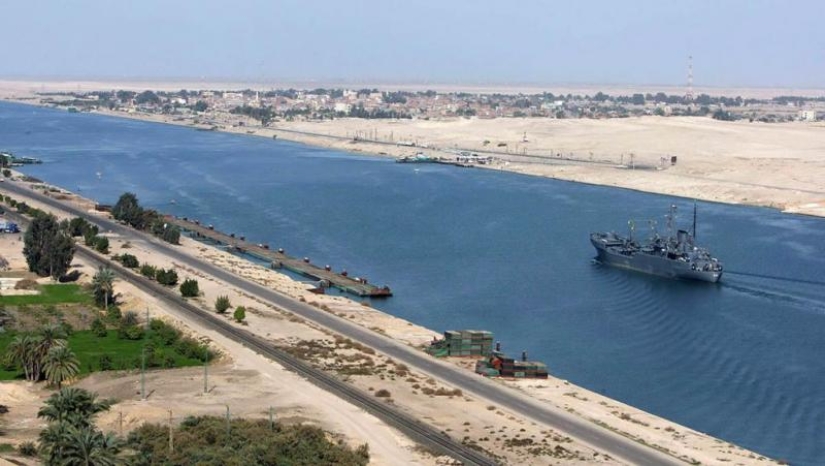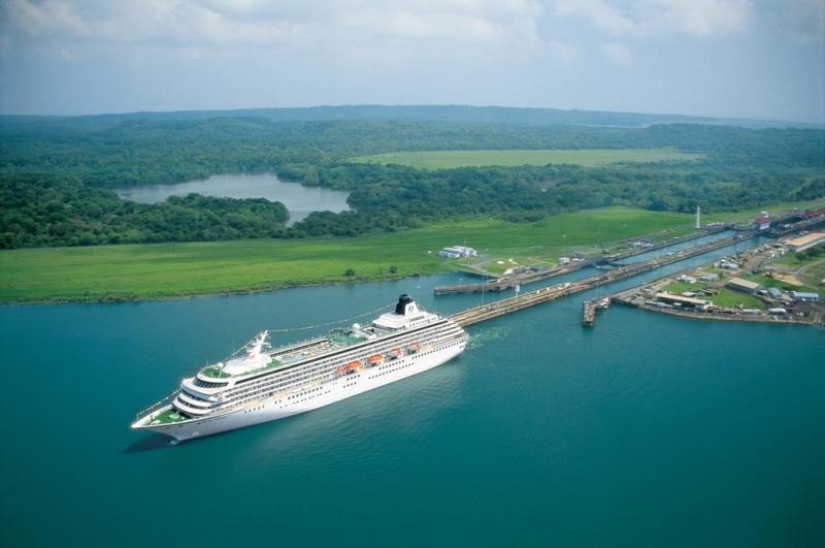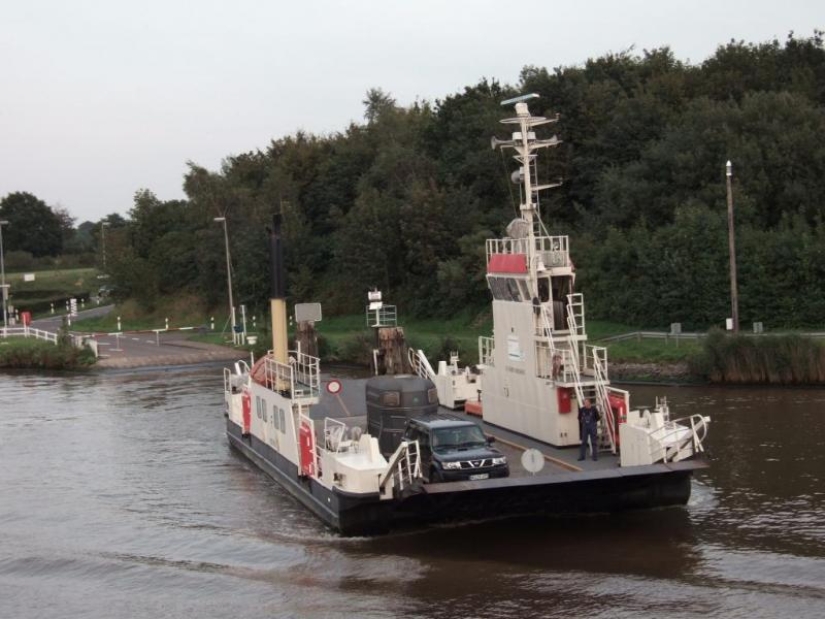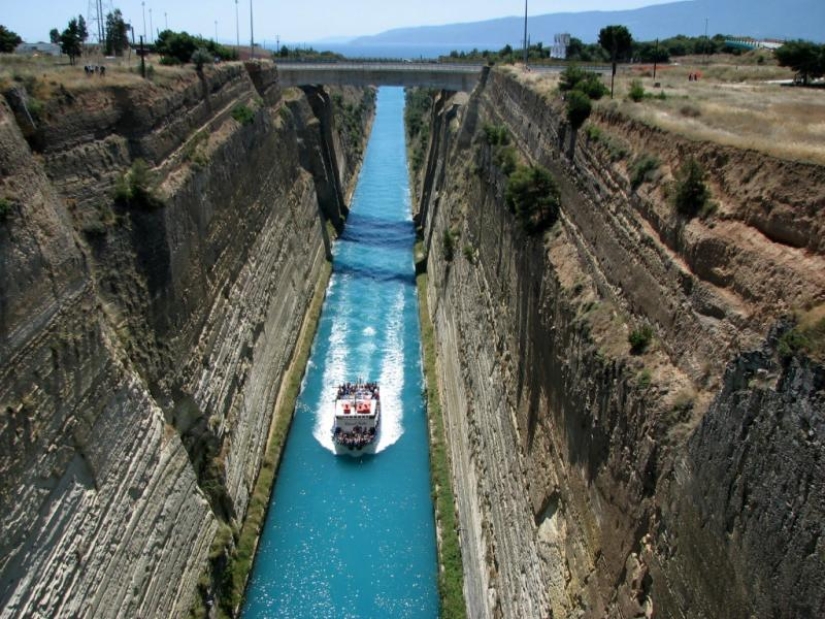Suez and 4 other largest shipping channels
Categories: Design and Architecture | Travel | World
By Pictolic https://pictolic.com/article/suez-and-4-other-largest-shipping-channels.htmlOn November 17, 1869, the Suez Canal was opened for shipping. On this occasion, today we will talk about it and about the four largest shipping channels in the world.

The idea of building the shortest waterway connecting the Red Sea with The Mediterranean, appeared in the era of the Middle Kingdom of Egypt, but the canal built by the Egyptian Pharaoh Necho II lasted only until 776.

In 1854, Ferdinand Marie Lesseps, a diplomat and businessman of French origin, skillfully using France's influence on the Egyptian government and his lucrative connections, obtained a concession from the ruler of the country for the preferential construction of the Suez Canal.
The construction of the grandiose structure, which began in the spring of 1859, took a whole decade and required the use of about one and a half million people. Egyptians, recruited on a compulsory basis for 60,000 people a month, acted as laborers on the project. The grand opening of the Suez Canal took place on an incredible scale on November 17, 1869.
Over the years of its existence, the Suez Canal managed to be under the domination of France, England, joint control of the two countries, and in 1956 it was nationalized by the Egyptian government. The current length of the Suez Canal is just over 162 kilometers, and the depth on the fairway is 22.5 meters. All ships whose countries are not at war with Egypt are allowed to sail through Suez, except for ships with nuclear power plants.
The construction of the most famous gateway canal and the main tourist attraction of Panama is considered one of the most ambitious construction projects in the history of mankind. A trial attempt to build it, undertaken by the "father" of Suez, failed — the obstacles posed by climatic and geographical conditions proved insurmountable.

At the beginning of the 20th century, the United States of America, interested in increasing its military power due to the lightning movement of naval forces from one ocean basin to another, acquired a project from France and concluded an agreement with the Government of Panama to provide a five-kilometer territory on both sides of the canal for indefinite use.
John Stevens, the chief engineer of the Panama Canal, took into account the mistakes of the French, ensuring disinfection of the construction site, and changed the project by developing a canal with three-stage locks on both sides and a section of the watershed rising 26 meters above the oceans.
The opening of the Panama Canal took place on June 12, 1920, and until 1999 it was under the control of the United States, which surrounded it with countless military bases. Now it is under the control of the Government of Panama. The length of the canal is almost 82 kilometers, the passage of which takes about 9 hours. The cost of passage through the channel varies depending on the class and size of the vessel and ranges from eight hundred to half a million dollars.
The North Sea-Baltic Canal, popularly called the Kiel Canal (after the name of the German city of Kiel, past which it is laid) is considered one of the main waterways of Germany. Its length is almost 100 kilometers, and its width is from 162 to 165 meters.

The beginning of the megastructure was laid by Wilhelm the First in the summer of 1887. 82 million cubic meters of land dug from the construction site, the incessant work of 9 thousand workers — and in 1895 the canal received the first ships.
The Kiel Canal acquired its current dimensions after improvements carried out before and after the First World War — a dozen extensions were created along it, designed for the simultaneous passage of several large vessels. The lock chambers allow the passage of ships whose size does not exceed 235 meters in length, and the channel system is able to stabilize the fluctuations of water masses resulting from the tides of the Elbe River or the stormy winds of the North Sea.
It takes about 9 hours for any of the approximately 250 ships passing through the Kiel Canal every day to cross. Its use helps captains to save about a day, avoiding circumventing the Jutland Peninsula.
The 6.4-kilometer-long and slightly more than 21-meter-wide canal connecting the Gulf of Corinth and Saronikos Bay in the Aegean Sea is considered one of the largest lockless shipping channels, although it is now practically inactive. The channel that we see today appeared as a result of the publication in 1869 of the Law "On the digging of the Isthmus of Corinth".

To create the Corinth Canal , the project of the same Ferdinand de Lesseps, and the line of the route coincided with the one that was determined by the architects of ancient Rome, trying to connect the Peloponnese with Greece by order of Nero. Two and a half thousand workers and the most modern equipment at that time were involved in the construction of the canal, more than 930 thousand cubic meters of earth and stone were dug and removed.
The Corinth Canal was inaugurated on August 7, 1893 and functioned until 1944, having played an important role in The Second World War. In 1948, the canal was restored and became operational again, but today, due to the increase in the size of ships, it is almost not used. During the year, only about 15 thousand ships pass through the Corinth Canal, which makes it the most expensive canal in the world in terms of kilometer length.
The longest shipping channel in the world, reaching 1794 km, stretches from Beijing to Hangzhou and can only be compared in grandeur with the Great Wall of China.

The construction of the Great Canal, designed to ensure the supply of food from the north of China to the metropolitan regions, began back in 486 BC, when the first 150-kilometer section was dug, connecting the Yangtze and Yellow River. A thousand years later, the construction of the water connection was continued by Emperor Yandy, using several million people to connect the capital Luoyang with Kaifeng and Yangzhou.
The Grand Canal acquired its modern appearance in 1949 — after deepening and expanding its shipping route reached thousands of kilometers. Now it is no longer the most important transport artery of the country, carrying only about 30 million tons of cargo, but it has become a very important tourist attraction in China.
One of the most popular tourist routes of the country, showing ancient farms and fields, large shipyards and original villages, is called "Journey along the Great Canal".
Recent articles

The blue whale, or bluewalker, is the largest animal currently living on earth. Some individuals reach a length of 33 meters and ...

In modern cinema, there is nowhere without special effects. We present you fantastic examples of superimposing special effects from ...

Even mathematical geniuses are not strangers to simple human joys. They also want to dress beautifully, drive expensive cars and ...